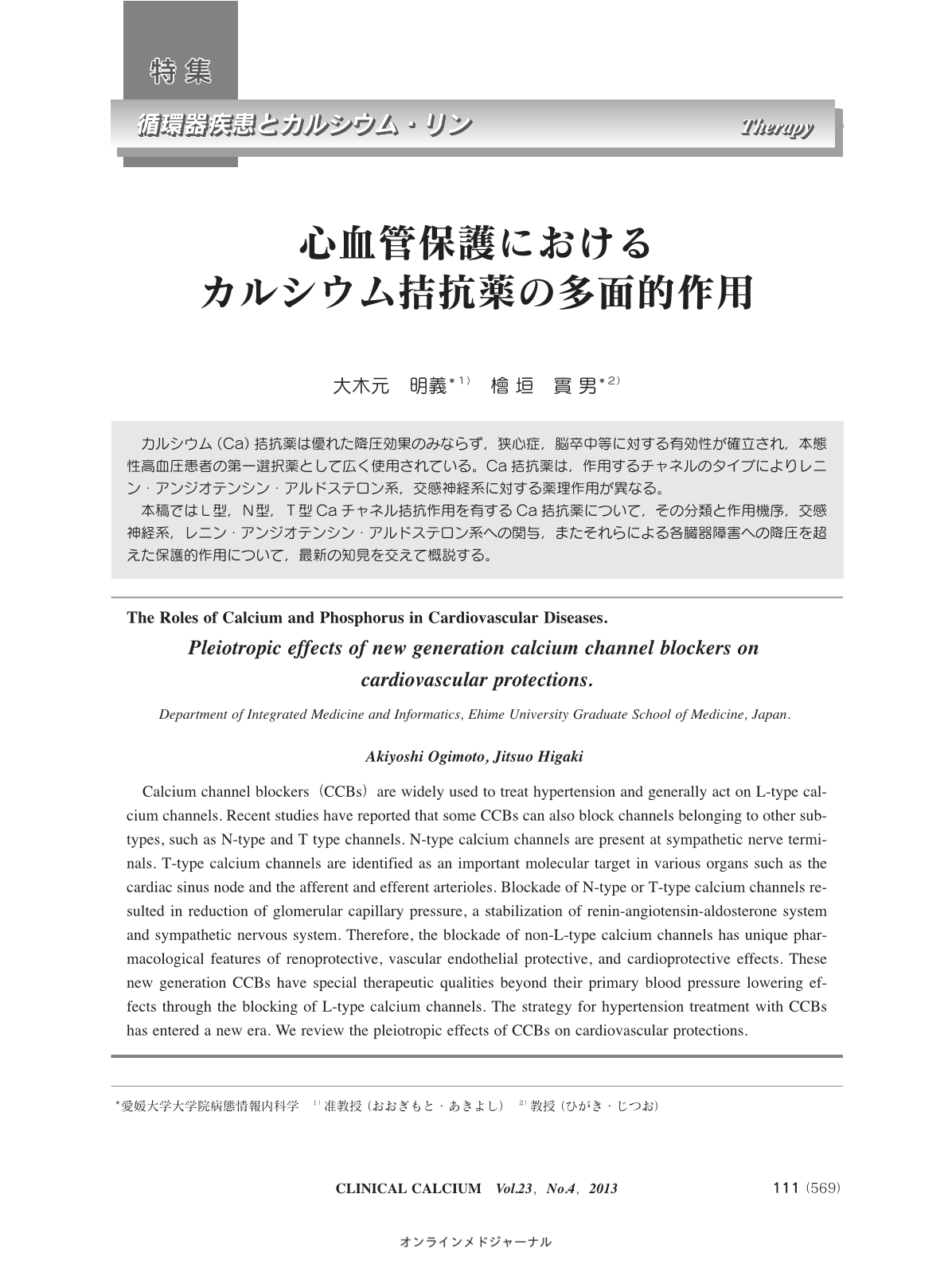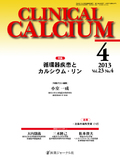Japanese
English
- 有料閲覧
- Abstract 文献概要
- 1ページ目 Look Inside
- 参考文献 Reference
カルシウム(Ca)拮抗薬は優れた降圧効果のみならず,狭心症,脳卒中等に対する有効性が確立され,本態性高血圧患者の第一選択薬として広く使用されている。Ca拮抗薬は,作用するチャネルのタイプによりレニン・アンジオテンシン・アルドステロン系,交感神経系に対する薬理作用が異なる。 本稿ではL型,N型,T型Caチャネル拮抗作用を有するCa拮抗薬について,その分類と作用機序,交感神経系,レニン・アンジオテンシン・アルドステロン系への関与,またそれらによる各臓器障害への降圧を超えた保護的作用について,最新の知見を交えて概説する。
Calcium channel blockers(CCBs)are widely used to treat hypertension and generally act on L-type calcium channels. Recent studies have reported that some CCBs can also block channels belonging to other subtypes, such as N-type and T type channels. N-type calcium channels are present at sympathetic nerve terminals. T-type calcium channels are identified as an important molecular target in various organs such as the cardiac sinus node and the afferent and efferent arterioles. Blockade of N-type or T-type calcium channels resulted in reduction of glomerular capillary pressure, a stabilization of renin-angiotensin-aldosterone system and sympathetic nervous system. Therefore, the blockade of non-L-type calcium channels has unique pharmacological features of renoprotective, vascular endothelial protective, and cardioprotective effects. These new generation CCBs have special therapeutic qualities beyond their primary blood pressure lowering effects through the blocking of L-type calcium channels. The strategy for hypertension treatment with CCBs has entered a new era. We review the pleiotropic effects of CCBs on cardiovascular protections.



